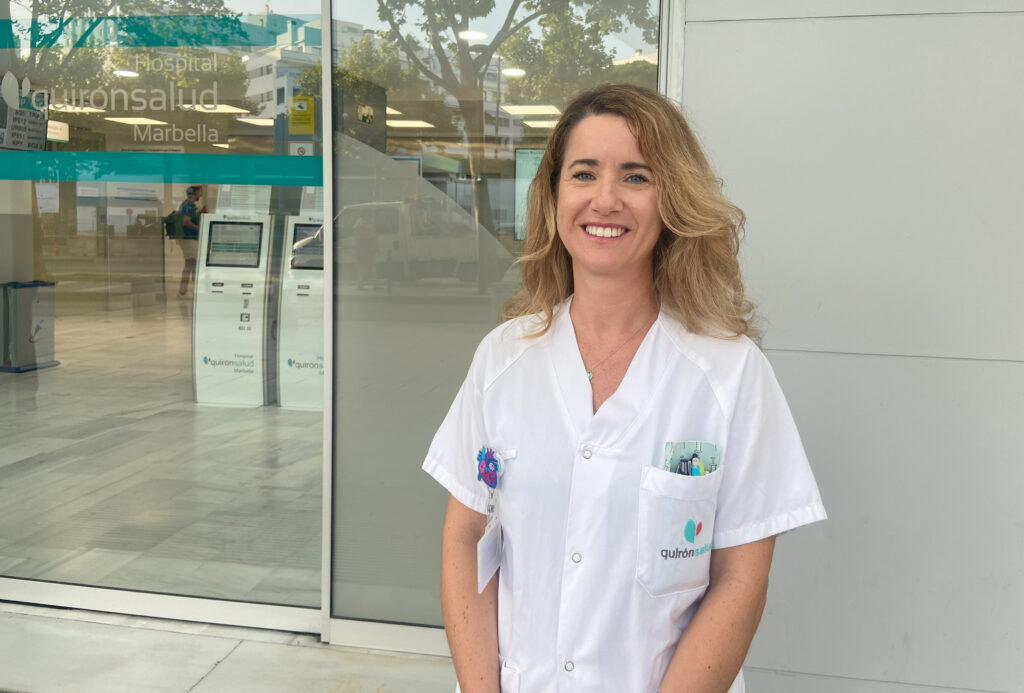The heat stroke is much more than dizziness or a drop in blood pressure. Immersed in the second heat wave of the summer, which will last until Sunday, an increase in cases has been detected with symptoms that go beyond physical exhaustion. "When the body temperature exceeds 40 degrees Celsius, not only do the organs fail, but judgement also begins to fail," explains the Dr. Esther Hurtadohead of the Quirónsalud Marbella Hospital Emergency Department.
During the last few weeks, and coinciding with the heat peaks in the province of Malaga, his team attended to ten people with symptoms compatible with heat stroke. Although none of the cases have been fatal, they have required urgent treatment for advanced symptoms affecting both the circulatory and nervous systems. "Initially, the patients present an increase in body temperature, profuse sweating, tachycardia, hypotension, fatigue, weakness, muscle cramps, dizziness, headache, nausea and cold skin."he says. When you reach 40°C and "heat stroke sets in, patients begin to have symptoms of general involvement such as vomiting, confusion, agitation, agitation, delirium, bizarre behaviour, incoherence when speaking, seizures Seizures o loss of consciousness. Signs of multi-organ damage, such as renal failure, liver failure or respiratory dysfunction, appear later.
The body loses control
Although the term "heat stroke" is often associated with direct sun exposure, the real cause is the body's inability to dissipate excess internal temperature, especially when the temperature exceeds 30 degrees Celsius.°C and humidity, intense exercise or poorly ventilated environments. "Up to 30 degrees the body can regulate body temperature well. But after that, if other factors are added, this self-regulation fails," explains Dr Hurtado.
The result is not only a rise in temperature, but also a alteration of the thermoregulatory system of the brainwhich can lead to incoherent behaviour and states of disorientation. This makes it a particularly dangerous condition for older people, patients with chronic illnesses, people with cognitive impairment or those taking medication that affects thermal response.
Some medicines can aggravate the risk of heat stroke without the patient's knowledge. According to Dr. Hurtado, these are "very common drugs, such as diuretics and beta-blockers (for blood pressure), tricyclic antidepressants, benzodiazepines or drugs with anticholinergic effects". All of them can alter the body's ability to dissipate heat, so greater vigilance and prevention is recommended for those who use them.
A real case: mild dementia and a walk in the Marbella sunshine
She recalls a recent episode that illustrates these hidden risks well: an octogenarian man with mild dementia was found disorientated on a bench after a walk in the sun in winter clothes. "He lived alone and no one was able to warn him of the danger. It was a clear example of the vulnerability of certain groups to extreme heat," says Dr Hurtado.
The patient was transferred to the Emergency Department of Quirónsaludalud and, after stabilisation and treatment, he was discharged days later. But this case has served the medical team to emphasise the importance of keeping a close eye on those who cannot identify danger on their own.
More prevention and less trust
"Although the population is more aware than before, we continue to see cases that could be avoided," says the doctor. As a reminder, he insists on basic measures such as avoiding exposure to the sun between 11:00 and 17:00 hours; drinking at least two litres of water a day, even if you are not thirsty; avoiding alcohol, caffeine and sugary drinks; wearing light, light clothing, sun protection, a hat and sunglasses; adapting the working day to outdoor work; and, of course, keeping an eye on the elderly and people with chronic illnesses or who live alone.
What to do if someone suffers from heat stroke
In case of suspicion, the priority is to act quickly: "Call the emergency services (061 or 112), remove the affected person from the hot environment to a ventilated place in the shade, undress him/her, apply cold cloths or wet compresses with cold water on the neck, armpits and groin, and offer him/her cold water (if the patient is not conscious)".
Heat stroke can be silent, progressive and sometimes invisible to the eyes of the sufferer. For this reason, Dr Hurtado reminds us that "prevention is not only a question of hydration, but also of care and support".






